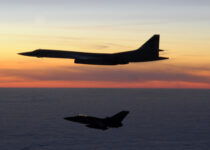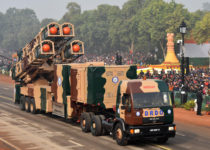NATO Air Campaign Over Yugoslavia Floundered Due To These 6 Deceptive Tactics Used By The Adversary
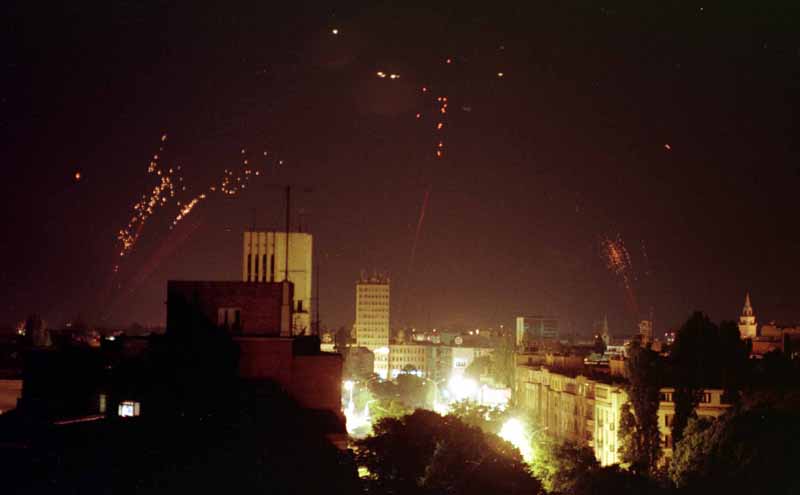
The NATO air campaign over Yugoslavia, called Operation Allied Force, that lasted from from March 24, 1999 to June 10, 1999, has a lot to teach about how certain tactics used by the side at the receiving end of the air campaign can drastically reduce the campaign’s efficiency and its ability to achieve its objectives. In this post, I will detail four tactics that the Yugoslav, or Serb forces employed against the air campaign to great effect, so much so that a majority of their air defense batteries, combat aircraft, as well as ground forces, including tanks and artillery, were left intact at the end of the campaign, even while they succeed in shooting down three NATO combat aircraft, including an F117 Nighthawk.
Dispersion
An air campaign involves searching for and attacking ground targets, which can either be fixed targets, like oil depots, ammunition depots, hardened aircraft shelters, factories, refineries, power plants, electricity grid, barracks, bridges, tunnels, or moving targets, like tanks, artillery, troops, transport vehicles, ships etc. Moving targets are far more difficult to find and attack than fixed targets, as they are smaller and thus easier to hide, and they keep changing their location, making it necessary to maintain a constant watch for them.
And while some fixed targets, like power plants, factories, refineries, bridges and tunnels cannot easily be dispersed, with some ingenuity, its possible to disperse other fixed targets, into numerous smaller, moving targets that can be hidden. Oil depots can be emptied and the oil stored at multiple hidden locations, same can be done with ammunition depots, aircraft can leave their hardened shelters at major airbases, and use remote airstrips, highways, and in some cases even grass fields, for landing and taking off, barracks can be emptied and the troops can hide at multiple locations.
And this is exactly what the Serbs did. When the NATO air campaign began, they had hid most of their tanks, artillery and missile launchers all over the country side. There were instances of tanks being disguised as haystacks, armored vehicles being disguised as trees, fuel trucks being covered with rugs and missile launchers being buried. Their fighter jets were similarly dispersed and kept hidden.
This made it incredibly difficult for the NATO aircraft to even find these targets, let alone prosecute them. In fact, even modern 5th generation fighters, with their distributed aperture system of infrared cameras, electro-optical targeting system, AESA radar that can operate in SAR mode, passive sensors that can listen to electronic emissions, and sensor fusion that fuses inputs from all these sensors into one coherent picture, can’t make out a tank if it looks like a haystack.
Decoys
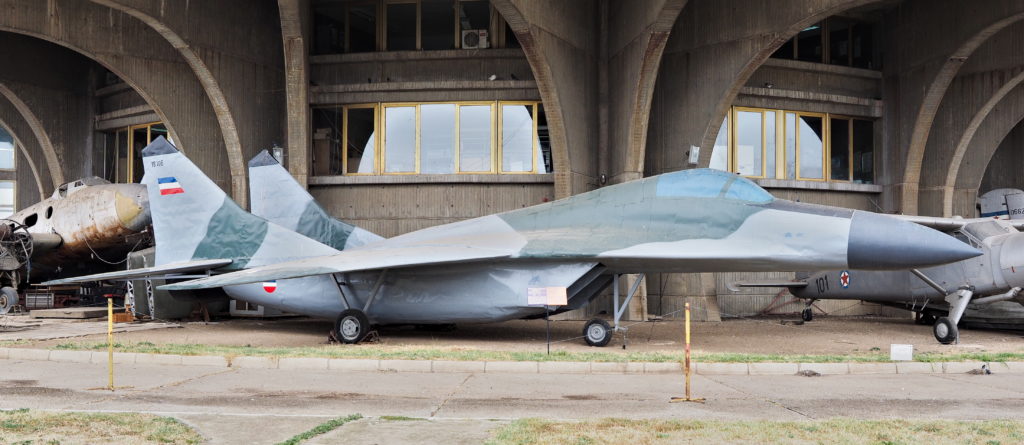
Apart from making tanks look like something else entirely, you can also deceive your enemy by making something else look like a tank, or for that matter, a howitzer, missile launcher, or even a fighter jet. And this is exactly what Serb forces did. Many clever tricks were used to make things look what they were not. Tanks were made out of tatra pak material, and even water receptacles were placed on them to replicate the infrared signature of a real tank. Chimneys were placed at an angle and even fires start at their base, to making them look like the smoking barrel of an artillery gun. Even decoys resembling fighter aircraft like mig-29 were made and placed at airbases.
Not just this, even defunct tanks and other armored vehicles, including those bombed out by NATO aircraft, were given a cosmetic uplift and used as decoys to be bombed for a second time by NATO. And the deception didn’t end there. They had a plan for deceiving even anti radiation missiles, specifically the AGM-88 HARM (Highspeed Anti Radiation Missile) used by NATO to take out enemy radars. They used the onboard radars of defunct Mig-29 and Mig-21 aircraft to make ground based decoys, that would look like ground radars to NATO aircraft and anti radiation missiles.
These decoys did a great job of soaking up a large proportion of NATO bombs and anti radiation missiles. NATO pilots are on record saying that tanks that looked absolutely real would just pop like balloons when hit by a bomb, revealing themselves to be decoys. These decoys were a source of great confusion among analysts, when trying to judge how many tanks and other vehicles were actually taken out by NATO, as it was accepted that a large portion of vehicles previously thought to be real and thus bombed, might have been decoys.
NATO had planned that once the enemy radars were taken out by HARMs, the NATO aircraft would be able to operate below 15,000 feet, with the anti aircraft artillery (AAA) and man portable air defense missiles (MANPAD) threat severely degraded in absence of radar guidance. However, even after expending at least 743 HARMs against various radars, the enemy still had enough radars through out the air campaign, that NATO aircraft had to operate above the 15,000 feet hard deck.
And such decoys are just as useful today as they were back then. Because again, even modern 5th generation fighters, with their distributed aperture system of infrared cameras, electro-optical targeting system, AESA radar that can operate in SAR mode, passive sensors that can listen to electronic emissions, and sensor fusion that fuses inputs from all these sensors into one coherent picture, can’t make out a tetra pak tank if it looks like a real tank.
Mobility
One of the most vital factors that decides how survivable a ground target is in the face of an air campaign is how mobile it is. As a stationary target has fixed coordinates, the enemy doesn’t need to look for it again and again, making it very easy to target it. If on the other hand the target is mobile and regularly changes its coordinates, then you need to constantly be on watch for it, updating its coordinates. This makes it way more difficult to keep a tab on the target’s location, and prosecute it.
The early air defense systems that the Soviets designed in the 50, like the S-75 and S-125, had very low mobility. The later air defense systems, like the 2K12 Kub, were very mobile. During Operation Desert Storm, Iraqi forces mostly used their air defenses as fixed sites. In fact, not just the relatively immobile S-75 and S-125, but even the highly mobile 2K12 batteries were used as fixed sites by them. This was one of the major reasons why the Iraqi air defenses were simply wiped out by the coalition forces without much hardship. In contrast (and perhaps learning from the experience of the Iraqis), the Serbs used not just their 2K12 batteries, but even the S-125 batteries in mobile role.
For example, Col. Zoltán Dani, who shot down the USAF F-117 Nighthawk piloted by Lt. Col. Dale Zelko, using a S-125 battery, had reduced the number of missile launchers in his batteries by half. This improved the mobility of the batteries by reducing the time required to redeploy from 150 minutes to 90 minutes. This, coupled with the deception provided by dummy SAM sites and decoy radars sourced from Mig fighters, helped Dani’s SAM batteries dodge all 23 HARMs fired by NATO at them. If the S-125 batteries were rendered so mobile, despite not having being designed for high mobility, the inherently mobile 2K12 Kub batteries were even harder to locate and target by NATO.
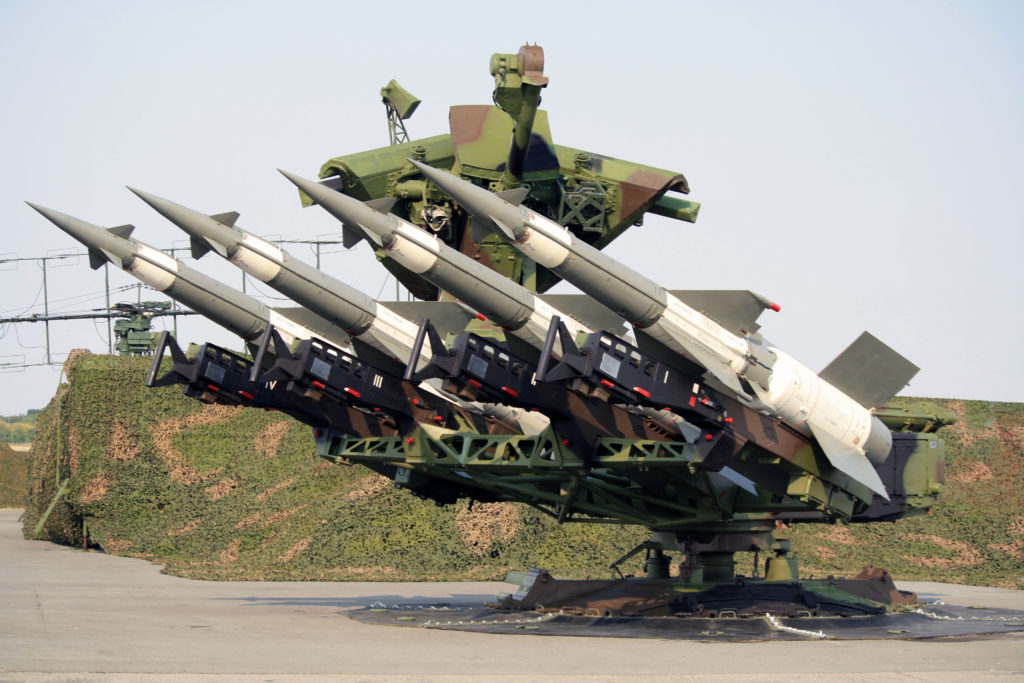
Judicious Use Of Anti Air Weaponry
Another reason why the Serb air defenses stayed largely undetected despite regularly engaging NATO aircraft is that they were very judicious and cleaver with the use of their radars and missiles. Zoltan Dani, for example, had tuned down his Spoon Rest surveillance radar to the lowest possible bandwidth. At this bandwidth, the NATO radar warning receivers were not calibrated to pick up the radar waves, but the radar was able to give a rough track of F-117 aircraft (though not a weapons grade lock). Then he aimed the fire control radar of his battery to the approximate region where the F-117 was supposed to be according to the Spoon Rest surveillance radar.
He then switched on the fire control radar for 20 seconds, but couldn’t detect the F-117. A second attempt also failed. On the third attempt, however, the F-117 opened its bomb bay doors just as Dani switched on his radar for another 20 seconds. The open bomb bay doors hugely increased the radar cross section of the F-117, helping the radar detect it. Right then, two missiles were shot in that direction, one of which detonated close enough to the F-117 for its metal shrapnel to pierce the aircraft and send it crashing down.
Fortunately, Zelko was able to eject and survived. He evaded the Serbian search parties by hiding in an irrigation ditch, and was rescued by a USAF combat search and rescue team the next day. In fact, Zelko and Dani later met many years after the war ended and they are now friends. This is a heartwarming example of how human kindness invariably covers the wounds of war over time.
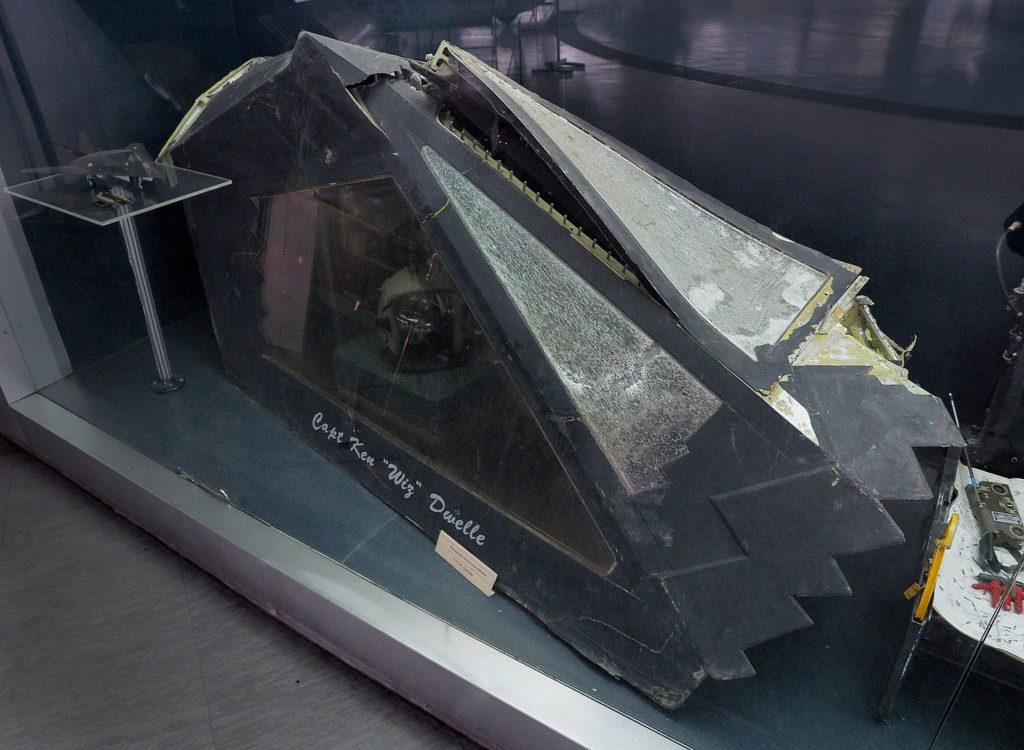
Another US warplane shot down by the Serbs was an F-16 piloted by Scott O’ Grady. In this case, the Serbian commander was operating the 2K12 Kub air defense system, which is far more mobile and therefore even harder to locate than systems like S-125. In this case too, similar tactics were utilized to ambush the aircraft. The Serbian commander knew that if he kept the radar on for a long time, the radar’s location would be found out by the NATO planes and a HARM would soon be on its way. But if he kept the radar on for a very short amount of time, then the missiles could not be guided to their target through out their journey.
So he switched on the radar for a very brief period. This prevented the NATO aircraft from calculating the location of the radar, even though O’Grady was able to detect the radar’s emissions. From this brief period of illumination, the commander was able to know the altitude, speed and direction of the F-16. Based on this information, he pointed the missiles at the region where the F-16 would likely be after a particular interval of time, and fired two missiles towards that region with the radar turned off.
In absence of radar guidance, the missiles flew towards the direction in which they were fired using inertial guidance. And O’Grady had no clew they were coming as they did not have an onboard radar whose emissions could be detected. Then, just around 5 seconds before the missiles reached the region where the F-16 was supposed to reach at the same time, the commander of the 2K12 unit switched back on the radar.
The radar return of the F16 was immediately picked up by the missiles and they flew towards it. As O’ Grady performed evasive maneuvers, one of the missiles exploded between him and another F-16 flying alongside, while the other one detonated right next to the F-16 being flown by O’Grady, sending it crashing down. Like in case of Zelko, O’ Grady too was able to eject and survived. He too evaded capture by the Serbian search parties and was rescued by a US combat search and rescue team later.
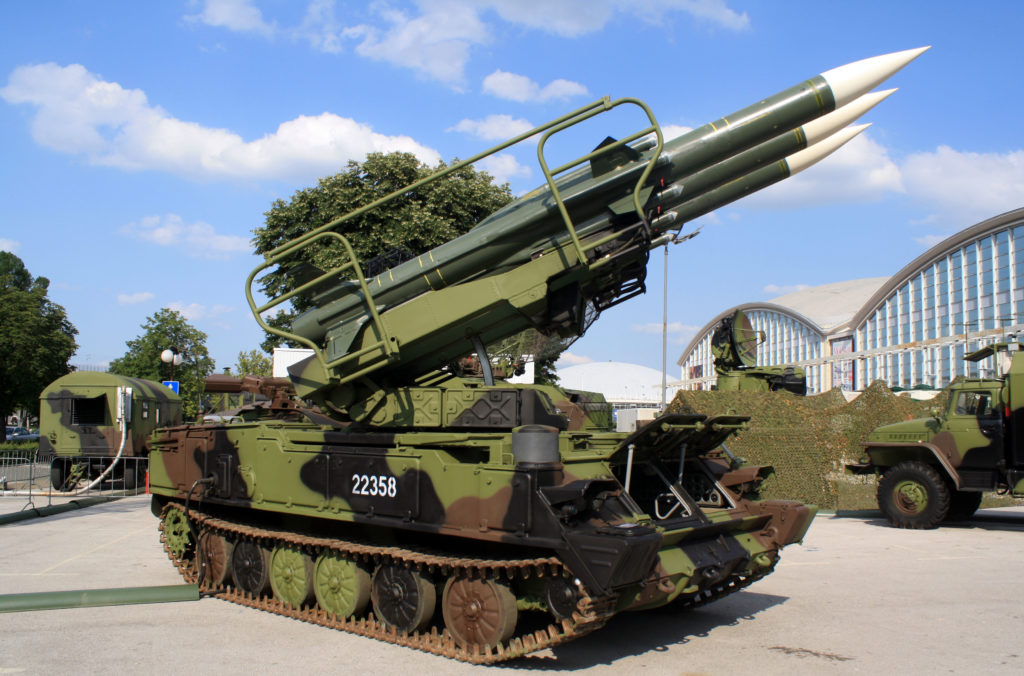
Integration of Air Defenses Into One Coherent System
The fifth tactic that resulted in a very tough game for NATO was that the Serbs integrated all their air defense systems, from fighters like Mig-29 and Mig-21, to SAM systems like S-125 and 2K12, to AAA and shoulder mounted SAMs, and all the ground radars and other sensors servicing these weapons, into one single, networked, integrated air defense system (IADS). This ensured that even if some of the weapons and sensors were taken out by NATO, other weapons and sensors could use each other to fight on, as they all had access to a common picture of the battlefield.
In fact, the networking of various air defense nodes into an IADS remains a cornerstone of modern air defense strategy, and is being continuously improved and upgraded by various countries. Another thing that made the Serbian IADS quite robust was that the Serbs exchanged information mostly through underground optical fibre and metal cables, and used wireless communication only when absolutely necessary. This made it very difficult for NATO aircraft to locate and target the command and control infrastructure of the Serbian IADS.
Espionage
Finally, the sixth and little known factor that helped the Serbs is that the airbases being used by NATO aircraft were under continuous observation of Serbian spies. Every NATO aircraft landing and taking off from these bases was being noted and the information being forwarded to the Serbian authorities. This went a long way in giving the Serbs a clear picture of the NATO plans, and gave early warning of several impending air strike missions, giving them precious time to prepare themselves. In fact, it is said that Dale Zelko’s F-117 had also been spotted taking off by the spies, and Zoltan Dani consequently knew about it in advanced, which gave him much time for preparing the fatal ambush.
Espionage of enemy assets is a much unappreciated (in public) aspect of a conflict, that makes a huge difference. No matter how stealthy a fighter is. If it has only a handful of large bases to operate from, its activities at those bases can be easily observed and inferences arrived at by the adversary. this role is played by the character of Michael D. Edwards, Jr. in the novel Red Storm Rising by Tom Clancy. Edwards covertly observes Soviet activity at the Keflavik airbase in Iceland.
In future this role of keeping enemy airbases under constant observation could even be taken up by HALE (High Altitude Long Endurance) drones, especially if they have low RCS. In fact this is exactly what was done by Israel in Operation Mole Cricket 19 in 1982, when Israeli UAVs kept a constant watch over Syrian airfields, and alerted the manned fighters about the air activity there.
This issue could be addressed to some extent by using remote airstrips or even roads for flight operations during a conflict, as keeping a watch on all the airstrips or roads in a region would be far more difficult. This would also make it harder to disrupt air operations by hitting the major airbases. But such dispersed operations using roads and remote airstrips is not very easy, as it involves a lot of training and reduces efficiency of operations in many cases.
Why The Air Campaign Should Have Been Accompanied By A Ground Campaign
Ever since the importance of warplanes in modern warfare was substantially demonstrated during the second world war, either through their use by the army or the navy, the importance of ground forces has been consistently underestimated, so much so that many policymakers believe that future wars could be won by using warplanes alone, without deploying ground troops. NATO’s floundering air campaign over Yugoslavia threw this perception down the drain, as many conflicts before and after it have. As described above, one of the main reasons most of the tanks and other military hardware of the Serbian forces escaped NATO airstrikes is that they were thoroughly dispersed and hidden.
However, tanks and other weapons can be dispersed and hidden if they don’t have to fight the enemy forces on the ground. If there is a ground offensive by the enemy, then the tanks and armored vehicles will have no choice but to come out of hiding and mass together in the open in order to attack the invading enemy ground forces. This would make it far easier for the enemy’s warplanes to locate the tanks and attack them. Had NATO accompanied its air campaign with a ground campaign, this is exactly what would have happened. But a ground campaign was ruled out as the coalition partners didn’t want to escalate the conflict. Consequently, the air campaign had little impact.
Things NATO Couldn’t Have Changed
Apart from these factors, however, there were some inherent characteristics of that particular theater of conflict, that the Serbs benefited from. The terrain of Yugoslavia was highly mountainous and forested. This meant plenty of places to hide for the Serbs. In fact, many of the ELINT and SIGINT and AWACS aircraft of NATO, like the Rivet Joint and the E3 Sentry, had a tough time detecting targets hidden behind mountains, as the mountains blocked the radar and radio signals that these aircraft either listened to or emitted themselves. And the persistent threat posed by the Serbian air defenses prevented these aircraft from venturing into the enemy airspace.
In many instances, high flying U2s and other spy aircraft made up for this deficiency. But that wasn’t always possible. The whether over the region was also very often not conductive to air missions. The high cloud cover that was common affected the performance of laser guided munitions. All this was in contrast to the situation the coalition forces found themselves in during operation desert storm over Iraq, where much of the terrain was just flat desert with little place to hide, and the sky was usually free of clouds.
Two limitations of NATO also need mention, namely, the constraints on targets and vectors of approach NATO aircraft faced in order to minimize collateral damage, and the disagreements between different NATO members on how aggressive the campaign should be. Besides, in many instances, the time taken between detection of a ground target and the confirmation of it being a legitimate target and not a civilian vehicle or instillation, was too long.
What Has Changed Since?
Its been more than 20 years since NATO’s air campaign over Yugoslavia. The country of Yugoslavia no longer exists. But Serbia, the new country that inherited most of the Serbian forces that fought against NATO, still has the same military. Many technological advancements have happened on both sides since. Modern versions of HARMs and other anti radiation missiles incorporate methods of guidance other than just passive homing in on the source of enemy radar. They have optical and infrared sensors as well, to locate the radar even after it has stopped emitting. This might make the tactic of only briefly switching on the radars that the Serbs employed less useful in the modern battle field.
NATO also learned from the mistakes that led to the shooting down of the F-117. Modern air tactics used by NATO involve not using predictable paths, and frequently changing the directions of approach to the target, so as to keep the enemy guessing. And reportedly, fifth generation fighters like the F-35 and F-22 have been designed to open their internal bay doors for minimum possible amount of time, so that the enemy radar gets minimum possible opportunity to detect them through the brief increase in the RCS.
There are some tactics, however, that are still relevant and will stay relevant for the foreseeable future. The tactics of dispersing the forces, disguising them as other objects, and using decoys are among them. In fact, there are companies that produce inflatable decoys on an industrial scale. These decoys can easily be transported and stored in deflated form and inflated on site. In fact, they even replicate the IR signatures of the real machines they are supposed to mimic, and can also perform limited movement.
Moreover, there are tactics that are now more prominent than before on the modern battlefield, that will further help the defender. These include the anti access area denial (A2AD) tactics, that involve the use of long range surface to surface and surface to air missile systems, like Brahmos, DF-21, DF-26 and S-400, to prevent the aggressor from even accessing the battlefield, by attacking the military bases, staging areas and support aircraft like AWACS and refueling tankers from hundreds of kilometres away.
In short, while the battlefield has evolved significantly since 1999, and many new developments would benefit both the aggressor and the defender in a similar conflict today, most of the techniques that the Serbs used against NATO in 1999 will continue to be useful now and in the future as well.

